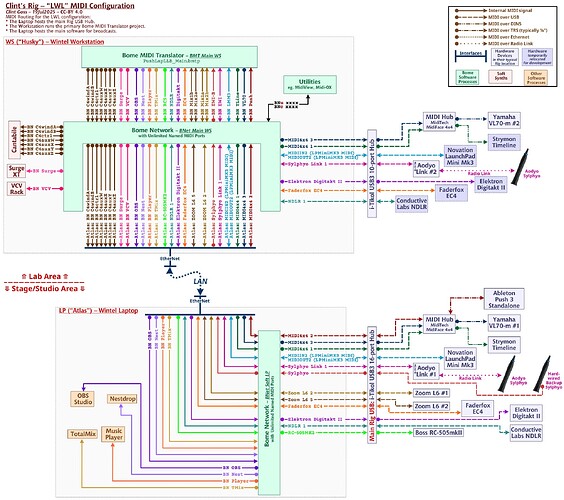In one version of my Rig, I have two Zoom LiveTrak L6 mixers (one for WindSynth inputs, the other is my output mixer). They both have the same MIDI name, so ‘the system’ adds a Tag on the end of the name - something like "… (1) and ‘… (2)’.
There’s no way to tell which Tag refers to which device, except to try it. Fair enough. However, which one is which changes arbitrarily whenever I power up. Powering up the two units in order does not have a predictable effect on which is which. Sometimes they change when one of the units is powered down and back up. It’s a Nightmare.
I can straighten it out in Bome MIDI Translator by changing the targets of Aliases, but that won’t work when I move to the BomeBox for Live use.
Is there a general solution to this scenario?? I searched this forum, and didn’t seen something that directly applied.
My one idea:
- Set one units to MIDI channel 1 and the other to MIDI channel 2.
- Send all output for either unit to both MIDI Ports.
- Accept input from both MIDI ports and figure out who is sending by the Channel.
This might work (I have not tested exactly how the L6 behaves if the MIDI channel is restricted).
However, it is horribly wasteful of MIDI bandwidth and I suspect it will really muck up my BMT translator and rules with duplicated stuff.
Any thoughts welcome!
